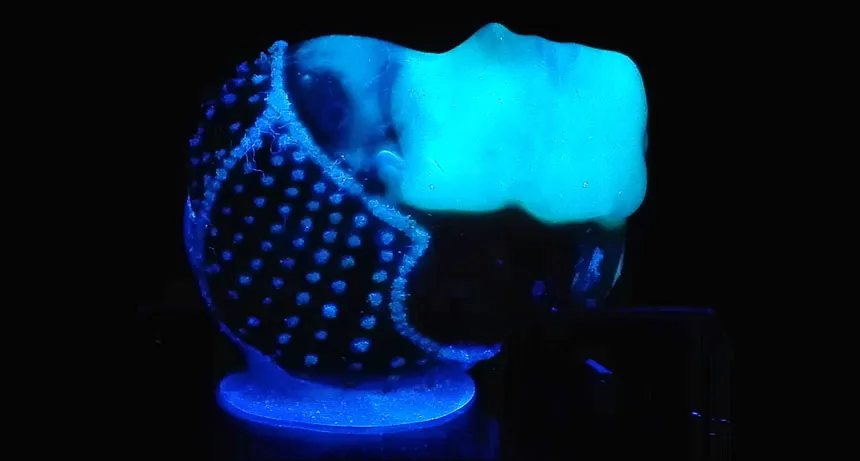New 3-D printed materials harness the power of bacteria
Items made with ‘living ink’ could make medical supplies or clean contaminated water

IT’S ALIVE Living bacteria can give 3-D printed materials special powers, such as producing form-fitting wound dressings. Here, such a material is printed on a doll’s face and stained to fluoresce blue.
Manuel Schaffner and Patrick A. Rühs